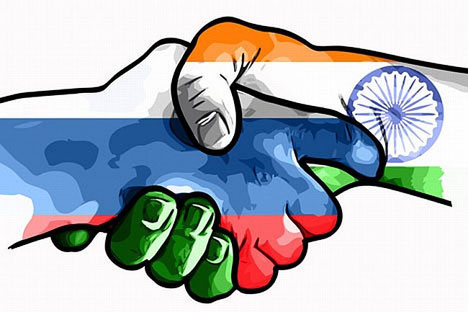The Enduring Alliance Amid Global Pressure
In an increasingly multipolar world where oil prices fluctuate with geopolitical tensions and raw material security defines national interests, the India-Russia relationship stands as a testament to strategic autonomy and mutual benefit. Despite mounting pressure from the United States through sanctions and tariffs, both nations have deepened their energy cooperation, with Russia emerging as India’s largest crude oil supplier and a crucial partner in ensuring energy security.

The relationship between New Delhi and Moscow has weathered numerous geopolitical storms since the 1950s, but the current phase represents perhaps its most significant test. As the Ukraine conflict triggered Western sanctions on Russia in February 2022, India made a calculated decision to prioritize its national interests over external pressures, leading to a dramatic transformation in its energy import patterns.
Russia’s Energy Lifeline to India: Beyond Oil Prices
Russia’s support for India extends far beyond merely supplying discounted crude oil. The partnership encompasses a comprehensive “special mechanism” designed to circumvent US sanctions and ensure uninterrupted energy supplies. Russian Charge d’Affaires Roman Babushkin recently confirmed that Russia possesses “very, very special mechanisms” to continue oil deliveries to India despite international pressure.
The numbers tell a compelling story. From a mere 0.2% share of India’s total oil imports before the Ukraine conflict, Russia’s share skyrocketed to over 40% by 2024, making it India’s largest oil supplier. This represents one of the most dramatic shifts in global energy trade patterns in recent history, with India importing 1.7 million barrels per day from Russia by mid-2025.
Oil prices have been a crucial factor in this partnership. Russia offers India a consistent 5% discount on crude oil purchases, with some reports suggesting discounts ranging between 5-7%. This pricing advantage has saved India approximately $33 billion in energy costs between 2022 and 2024, providing significant relief to the world’s third-largest oil consumer.
Raw Material Security and Strategic Autonomy
The India-Russia partnership extends beyond crude oil to encompass a broader spectrum of raw material cooperation. Recent developments indicate both nations are exploring collaboration in rare earth and critical minerals extraction, underground coal gasification, and creation of modern industrial infrastructure. These critical materials are essential for India’s energy transition goals and its growing clean energy technologies sector.
Russia supplies India with various raw materials including fertilizers ($2.07 billion in FY24), animal and vegetable fats and oils ($1.30 billion), and precious stones and metals ($1.18 billion). The bilateral trade relationship reached an all-time high of $68.7 billion in FY 2024-25, with Russia’s share dominated by mineral fuels and oils ($59.53 billion).
India’s heavy dependence on imported raw materials, particularly with its crude oil import dependency reaching a record 90% in April 2025, makes Russia an indispensable partner. This dependency has only increased over time, rising from 87.8% in FY24 to 88.2% in FY25, highlighting the strategic importance of reliable suppliers like Russia.
US Sanctions: The Double-Edged Sword
The United States has responded to the India-Russia energy partnership with unprecedented tariff measures. President Donald Trump imposed an additional 25% tariff on Indian goods, bringing the total tariff to 50%, with half specifically targeting India’s Russian oil purchases. This makes India one of the highest-tariffed nations in US trade policy.
However, the US approach reveals significant inconsistencies in its sanctions regime. While India faces punitive tariffs for importing 88 million tonnes of Russian oil in 2024, China – which imported 109 million tonnes – has been largely spared from similar measures. US Secretary of State Marco Rubio explained this discrepancy by noting that China refines Russian oil and sells much of it back into the global marketplace, making sanctions potentially counterproductive for global oil prices.
Treasury Secretary Scott Bessent accused India of “profiteering” from Russian oil imports, claiming Indian entities have generated $16 billion in excess profits. Yet this criticism ignores the fact that the US initially encouraged India to purchase Russian oil to help stabilize global oil prices after Western sanctions disrupted traditional supply chains.
Russia’s Multifaceted Support System
Russia’s assistance to India goes beyond merely offering discounted oil prices. Moscow has developed a comprehensive support system that includes alternative trade mechanisms, financial instruments, and diplomatic backing. Russian officials have assured India that if Indian goods face difficulties entering the US market due to tariffs, Russia’s markets remain “always open”.
The two nations have successfully shifted 90% of their trade payments to the rupee-rouble currency pair, reducing dependency on US dollars and demonstrating financial innovation in the face of sanctions. This de-dollarization effort represents a significant step toward creating an alternative international trade ecosystem.
Furthermore, Russia has begun accepting payments in Indian rupees after resolving technical issues that had previously left billions of dollars tied up in Indian banks. This breakthrough has facilitated smoother trade transactions and reduced the impact of Western financial sanctions.
Defense and Nuclear Cooperation: The Broader Strategic Framework
The energy partnership forms part of a broader strategic relationship encompassing defense and nuclear cooperation. Russia accounts for over 50% of India’s in-service military platforms and remains India’s largest arms supplier. The countries are jointly upgrading India’s fleet through programs like the new Sukhoi initiative, producing advanced military equipment domestically under the “Make in India” program.
Nuclear energy cooperation provides another dimension to the partnership. Russia has committed to building six civil nuclear power plants in Tamil Nadu and continues to supply uranium and nuclear technology despite Western pressure. This cooperation dates back to the 1970s when the Soviet Union, unlike the US, did not abandon nuclear cooperation with India after its first nuclear test in 1974.
Economic Resilience and Future Projections
Despite US pressure, both countries remain committed to expanding their economic relationship. The bilateral trade target has been set at $100 billion by 2030, with bilateral investment goals of $50 billion by 2025. Russian Deputy Trade Representative Evgeniy Griva projects annual trade growth of 10%, suggesting confidence in the partnership’s resilience.
India’s External Affairs Minister S. Jaishankar acknowledged the need to address trade imbalances while emphasizing the relationship’s strategic value. The trade imbalance has grown from $6.6 billion to $58.9 billion, primarily due to increased energy imports. However, this imbalance reflects India’s successful diversification of energy sources rather than a fundamental problem.
Global Market Implications and Energy Security
The India-Russia energy partnership has significant implications for global oil prices and energy markets. If India were to significantly reduce Russian oil imports under US pressure, analysts estimate it could drive oil prices to $120-130 per barrel, compared to current levels around $70. This price volatility would affect global economic stability and potentially trigger inflation similar to what occurred in early 2022.
The partnership also demonstrates how secondary sanctions can backfire. Rather than weakening Russia’s position, US tariffs on India may simply redirect Russian oil supplies to other markets, particularly China, which has already begun securing additional Russian crude shipments traditionally destined for India.
Technological and Infrastructure Cooperation
Beyond energy and raw materials, the partnership encompasses significant technological cooperation. The countries are collaborating in aerospace science, carbon fiber technology, additive manufacturing, 3D printing, and modernized wind tunnel facility establishment. These initiatives support India’s technological advancement while providing Russia with important markets for its industrial capabilities.
The International North-South Transport Corridor (INSTC) and Chennai-Vladivostok Eastern Maritime Corridor represent crucial infrastructure projects that will reduce logistics costs and transit times, making bilateral trade more efficient and competitive.
Geopolitical Ramifications and Multipolarity
The India-Russia partnership reflects broader shifts toward multipolarity in international relations. Russian officials have characterized Western pressure as “neo-colonial” behavior and emphasized that sanctions often harm those who impose them. This narrative resonates with many developing nations seeking to maintain strategic autonomy.
The relationship also highlights the limitations of unilateral sanctions in an interconnected global economy. Despite being the most heavily sanctioned nation globally, Russia has successfully maintained crucial economic relationships, demonstrating that sanctions effectiveness depends heavily on global cooperation rather than unilateral action.
Future Challenges and Opportunities
While the partnership faces significant challenges from Western pressure, several factors suggest its continued resilience. India’s growing energy demands, projected to reach 8.7 million barrels per day by 2040, ensure continued relevance for reliable suppliers like Russia. The development of alternative payment mechanisms and trade routes provides practical tools for circumventing sanctions.
The partnership’s future success will depend on several factors: continued innovation in financial mechanisms, development of alternative supply chains, and maintenance of political will in both countries. The upcoming meeting between President Putin and Prime Minister Modi in New Delhi by the end of 2025 will likely address these challenges and set the framework for future cooperation.
Conclusion: Strategic Partnership in a Changing World
The India-Russia energy partnership represents more than just favorable oil prices and raw material supplies. It embodies a strategic relationship that has withstood decades of geopolitical change and continues to evolve in response to new challenges. Despite unprecedented US pressure through sanctions and tariffs, both nations have demonstrated remarkable resilience and innovation in maintaining their cooperation.
Russia’s comprehensive support for India – from discounted energy supplies to alternative market access – illustrates how strategic partnerships can provide protection against economic coercion. The partnership’s success in diversifying payment mechanisms, developing alternative trade routes, and maintaining technological cooperation suggests that determined nations can find ways to preserve their sovereignty and mutual interests even under intense international pressure.
As global energy markets continue to evolve and geopolitical tensions persist, the India-Russia partnership will likely remain a crucial case study in how nations can maintain strategic autonomy while navigating complex international pressures. The relationship’s ability to adapt and thrive despite sanctions demonstrates that in an increasingly multipolar world, partnerships based on mutual benefit and strategic trust can prove more resilient than those imposed through coercion or pressure.
The ultimate measure of this partnership’s success will not be in its ability to resist external pressure, but in its capacity to deliver concrete benefits to both nations’ people while contributing to global energy security and economic stability. In this regard, the India-Russia energy relationship appears well-positioned to continue playing a significant role in shaping the future of international economic cooperation.
